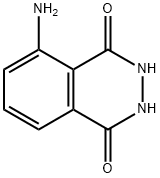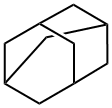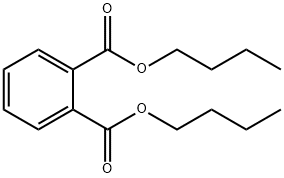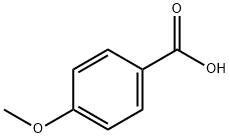AMPPD
- CAS NO.:122341-56-4
- Empirical Formula: C18H23O7P
- Molecular Weight: 382.34
- MDL number: MFCD08704558
- EINECS: 2017-001-1
- SAFETY DATA SHEET (SDS)
- Update Date: 2024-12-11 16:58:07

What is AMPPD?
Description
In the late 1980s, A. Paul Schaap and co-workers at Wayne State University (Detroit) reported the synthesis of dioxetane derivatives that trigger bright chemiluminescence when activated by alkaline phosphatase enzymes (see image). These compounds came to be known as “Schaap’s dioxetanes”.
One of Schaap’s compounds, 3-(2′-spiroadamantane)-4-methoxy-4-(3″-phosphoryloxy)phenyl-1,2-dioxetane1—known as PPD marketed by Lumigen2 (Southfield, MI)—is of particular interest. It is stable at ambient temperature; and in 1989, Schaap*, Hashem Akhavan, and Louis J. Romano reported that it is suitable for ultrasensitive enzyme-linked immunoassays and DNA probes. The same year, Irena Bronstein and co-workers at Tropix3 (Bedford, MA) described its use in immunoassays of the thyroid-stimulating hormone thyrotropin. Typically, PPD’s more stable disodium salt is used in immunoassays rather than the free acid.
PPD is used in more than 2 billion chemiluminescent immunoassays per year for clinical diagnosis, food safety, pharmaceutical analysis, and environmental monitoring. In 2018, Roland Lindh at Uppsala University (Sweden) and Harvard University (Cambridge, MA) and coauthors around the world wrote a comprehensive review of the chemiluminescence and bioluminescence of cyclic peroxides, including Schaap’s dioxetanes. The following year, Nir Hananya and Doron Shabat*4 at Tel Aviv University reported that adding an electron-withdrawing group to one of the dioxetanes increased its chemiluminescence quantum yield by 3000-fold.
1. SciFinder: phenol, 3-(4-methoxyspiro[1,2-dioxetane-3,2′-tricyclo[3.3.1.13,7]decan]-4-yl)-, 1-(dihydrogen phosphate).
2. Now part of Beckman Coulter (Brea, CA).
3. Now part of PerkinElmer (Waltham, MA).
4. Shabat was one of the early coiners of “Schaap’s dioxetanes”.
Properties of AMPPD
| Melting point: | ≈250 °c (dec., luminescence) |
| Boiling point: | 548.6±60.0 °C(Predicted) |
| Density | 1.47±0.1 g/cm3(Predicted) |
| solubility | 630 g/l (est.) |
| pka | 1.21±0.30(Predicted) |
| appearance | white crystals |
| form | Solid |
| color | White to off-white |
| CAS DataBase Reference | 122341-56-4 |
Safety information for AMPPD
Computed Descriptors for AMPPD
New Products
(S)-3-Aminobutanenitrile hydrochloride 4-Methylphenylacetic acid N-Boc-D-alaninol N-BOC-D/L-ALANINOL Tert-butyl bis(2-chloroethyl)carbamate 3-Morpholino-1-(4-nitrophenyl)-5,6-dihydropyridin- 2(1H)-one Furan-2,5-Dicarboxylic Acid Tropic acid S-2-CHLORO PROPIONIC ACID ETHYL ISOCYANOACETATE 2-Bromo-1,3-Bis(Dimethylamino)Trimethinium Hexafluorophosphate 4-IODO BENZOIC ACID 3-NITRO-2-METHYL ANILINE 1-(2,4-DICHLOROPHENYL) ETHANAMINE (2-Hydroxyphenyl)acetonitrile 4-Bromopyrazole 5,6-Dimethoxyindanone 2-(Cyanocyclohexyl)acetic acid 4-methoxy-3,5-dinitropyridine 1-(4-(aminomethyl)benzyl)urea hydrochloride 2-aminopropyl benzoate hydrochloride diethyl 2-(2-((tertbutoxycarbonyl)amino) ethyl)malonate tert-butyl 4- (ureidomethyl)benzylcarbamate Ethyl-2-chloro((4-methoxyphenyl)hydrazono)acetateRelated products of tetrahydrofuran








You may like
-
 Amppd 95% CAS 122341-56-4View Details
Amppd 95% CAS 122341-56-4View Details
122341-56-4 -
 2033-24-1 98%View Details
2033-24-1 98%View Details
2033-24-1 -
 1975-50-4 98%View Details
1975-50-4 98%View Details
1975-50-4 -
 2-HYDROXY BENZYL ALCOHOL 98%View Details
2-HYDROXY BENZYL ALCOHOL 98%View Details
90-01-7 -
 2-Chloro-1,3-Bis(Dimethylamino)Trimethinium Hexafluorophosphate 221615-75-4 98%View Details
2-Chloro-1,3-Bis(Dimethylamino)Trimethinium Hexafluorophosphate 221615-75-4 98%View Details
221615-75-4 -
 61397-56-6 CIS BROMO BENZOATE 98%View Details
61397-56-6 CIS BROMO BENZOATE 98%View Details
61397-56-6 -
 14714-50-2 (2-Hydroxyphenyl)acetonitrile 98+View Details
14714-50-2 (2-Hydroxyphenyl)acetonitrile 98+View Details
14714-50-2 -
 118753-70-1 98+View Details
118753-70-1 98+View Details
118753-70-1